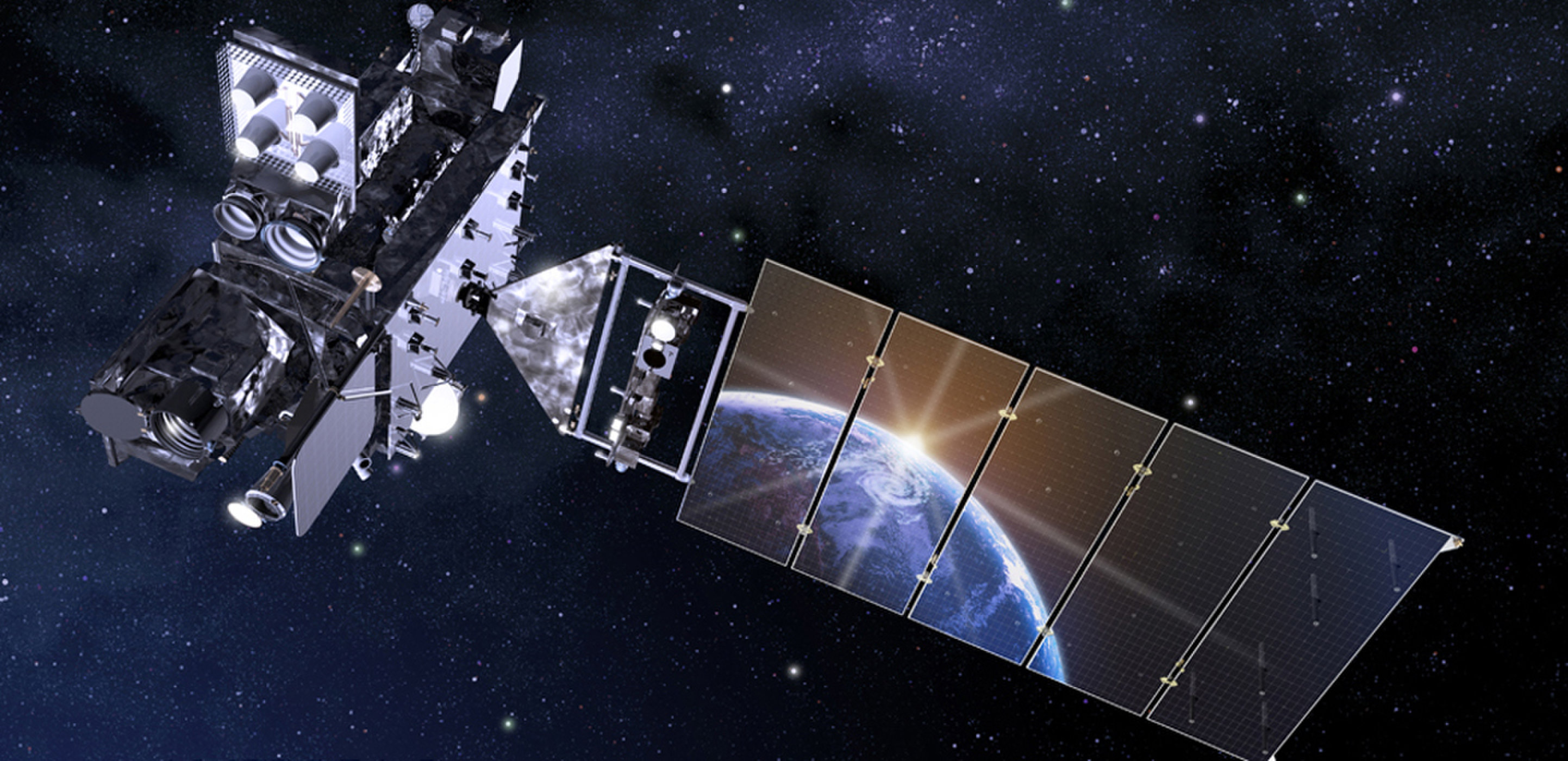Piu-bang-vzhuh: a satellite to detect lightning also notices meteors
- Transfer

GOES-16 in orbit, in the view of the artist. Source: NASA
A lot of light phenomena, both atmospheric and astronomical, are best observed at night — and it became clear recently that a detector designed for one type of event is very well suited for another.
Here we take, say, lightning . Since they often cause spontaneous fires, NASA specialists have developed a satellite monitoring system that monitors lightning strikes from space and marks their location on the map. But recently, on its basis, other scientists studying the question of the disintegration of meteoroids in the Earth’s atmosphere have launched another additional scientific project.
Peter Jenniskens, an astronomer at NASA and the SETI Institute, deals with the subject of meteoroids. “If you've ever seen the explosion of one of them, then you know how amazing it is!” He says. However, Peter not only enjoys a noisy spectacle, but is also seriously concerned about the security of our planet - which means for him the need to understand the exact consequences of each particular characteristic of any random asteroid. [ Meteor remnants "Fireball found in Botswana ]
Of course, this requires constantly learning new remnants of meteoritesand the points of their fall; therefore, some kind of space-based detector is needed, warning scientists about the approach of asteroids. According to Jenniskens, such a complex would seriously increase the chances of quick detection of impact sites and, accordingly, timely collection of debris.
Probably in the future there will be something highly specialized; nevertheless, even now it is possible to make some progress in solving the problem, thanks to the Global Lightning Mapper tool („global lightning mapping“, GLM) described above. GLM has already been installed on two GOES-16 and GOES-17 satellites (often called GOES-R and GOES-S) belonging to the National Oceanic and Atmospheric Administration, and after 2020the group will be replenished with two more similar ones - GOES-18 and GOES-19.
Yes, adds Jenniskens, the GLM is mainly “sharpened” for working with lightning, it only distinguishes the spectrum of ionized oxygen - and due to this it “sees” lightning even during the day - so much of what is happening around remains outside the field of view of the device. Therefore, the development team, as long as they did not gather enough information to test their theory, had some doubts about his ability to notice more meteoroids explosions. But finally, after a year of observing the sky with the help of GOES-16 and comparing the results with the reports of the Ministry of Defense , the hypothesis was successfully confirmed.
Jenniskens and his colleagues were able to identify the “bright finale” of a dozen meteors by the data obtained. GLM was able to register flashes with the brightness a little more intense than the light of the full moon, which corresponded to objects from 10 centimeters to one meter in diameter, and this is wonderful: such small stones do not pull on meteorite rain and do not carry a serious threat, but nevertheless managed to detect.
"We have convincingly proved that we can quickly catch meteorites in the future, moreover, even those that can be missed by other control systems if we get more information from GLM", - Peter explains - "Of course, you still have to seriously dig into the problem, to distinguish a car from a lightning unconditionally, for example, the accuracy of determination will increase if you cooperate with meteorologists and find out which areas were cloudy at the right time. ”
And while the work is going on, GLM still supplies scientists with luminous trajectories of new and new collisions. “It’s even a bit surprising that every event looks different - it once flares up and immediately dims, it burns steadily once,” says Jenniskens, “Most likely, the behavior of asteroids when falling depends ontheir composition and structure . "
Alas, there is no possibility to study the "heavenly stones" directly in space, but by tracking each one and carefully examining its path, we get one more grain of knowledge. “It is possible that in time we will even learn how to predict exactly how this particular object will fall apart in the atmosphere,” says Peter.
An article with research results published in the journal Meteoritics & Planetary Science on July 16, 2018.
